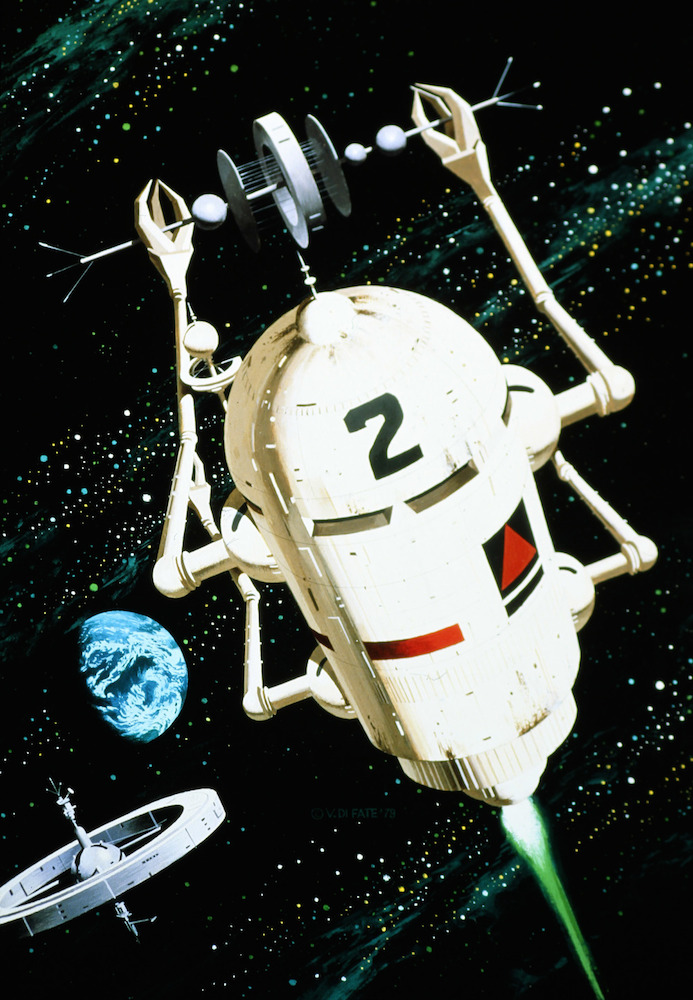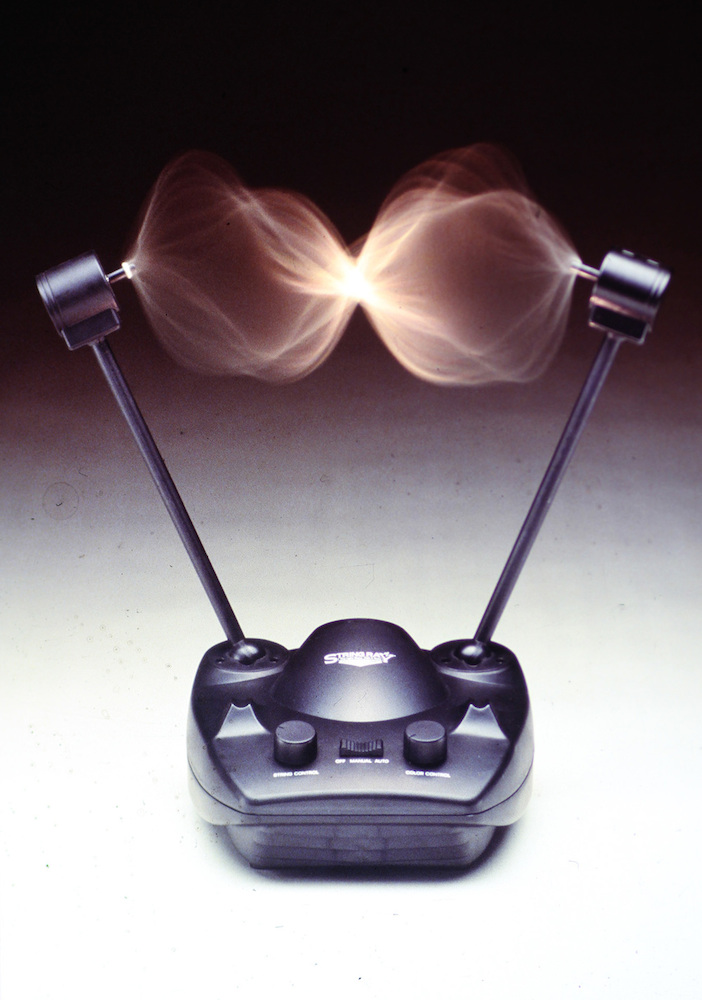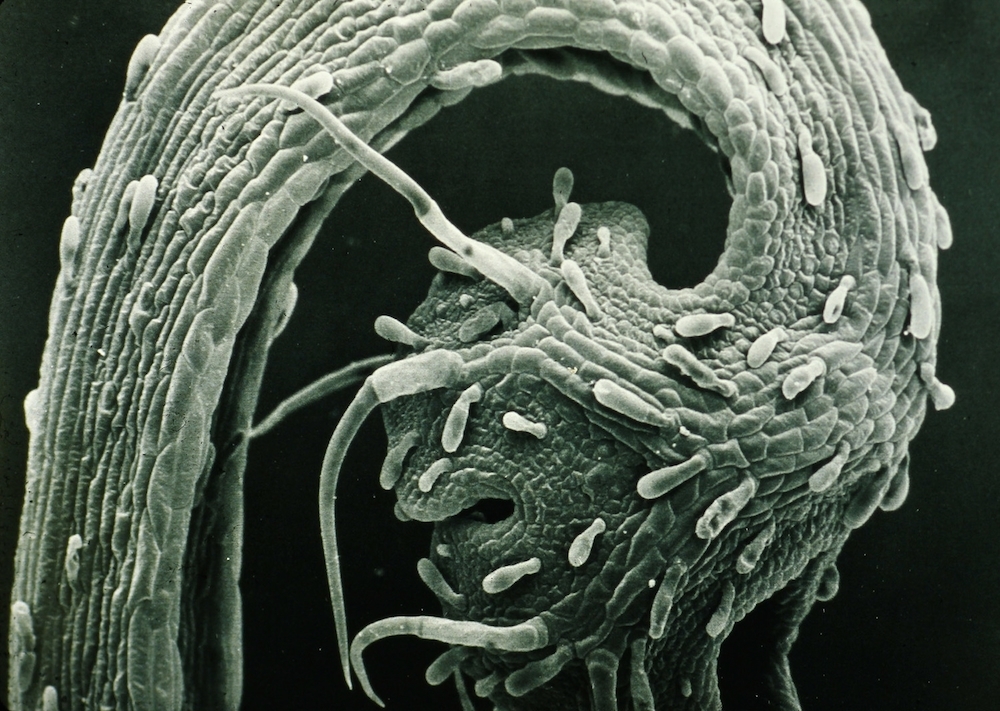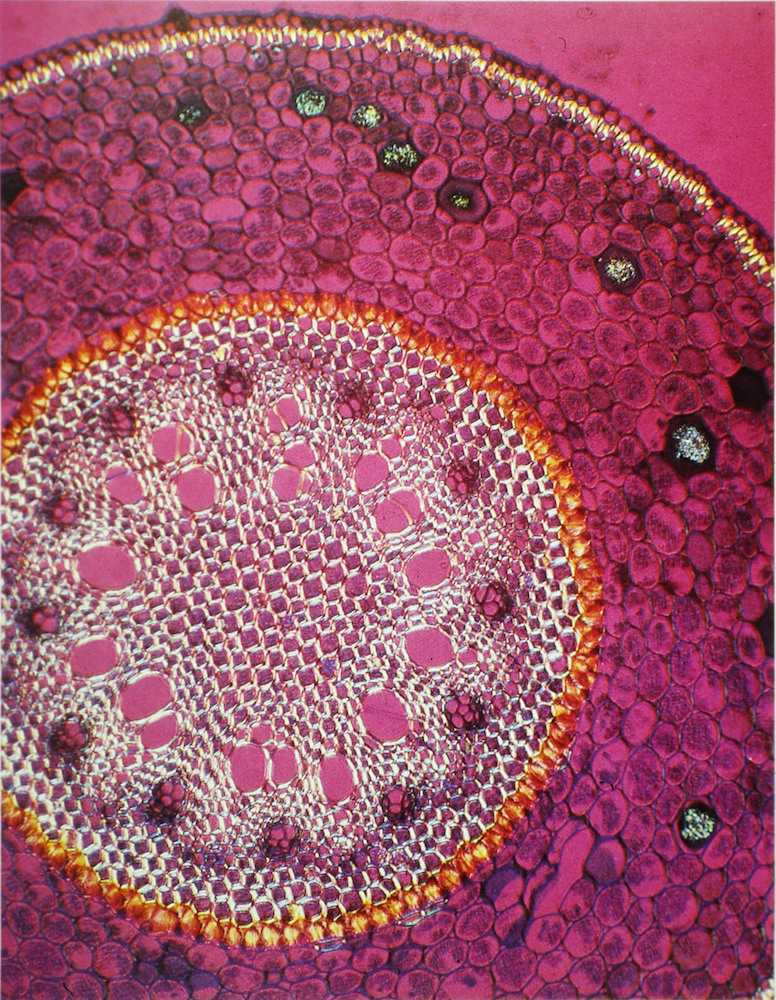Strange and Beautiful: Gallery of Old Sci-Fi Artwork
Humming Ship

This Omni Magazine cover from 1980 is a painting by British artist Tim White, whose interests included astronomy, technology and science fiction. White had completed more than 80 book covers in the science fantasy genre at the time this cover was printed.
Ford Desk Drive

A vision of working-on-the-go, from the April 1991 issue of Omni Magazine. The Desk Drive was a concept for an Explorer minivan equipped with a computer, printer, VCR, cellular phone, fax machine, a voice-activated memo pad, and even a coffee pot.
Robot Evolution

Artist Gottfried Helnwein presents a view of technological-human evolution in the November 1981 issue of Omni Magazine.
"The next evolutionary leap will occur when superhuman robots give up their desire for individuality and begin to share programs... and hundreds of scientists with access to minds as brilliant as Einstein's would spend their days fathoming the universe."
Frog Motorcycle

German engineer, sculptor and architect Luigi Colani designs things without straight lines. "Careful observation teaches me that, with the exception of crystals nothing in nature admits of a straight line. The universe itself is made up of curves, and I can only obey the laws of Nature," Colani said. His designs were featured in the January 1980 issue of Omni Magazine.
Alien Educator

Vincent Di Fate's painting of a computerized library, featured in Omni Magazine's May 1981 issue, depicts "the powerful tools that will enable humankind to assert its citizenship in the universe." Even though the hostile environment of space makes humans dependent on technology, "it is man who must bear the responsibility for his actions, not his science or his machines," Di Fate said.
Mobile Environment

Di Fate specialized in space art, such as this image of a "mobile environment" in Omni Magazine's May 1981 issue. "I have a Victorian belief in the mystical powers of the machine," Di Fate said.
Sting Ray

This interactive kinetic sculpture consists of a string attached to motors on the ends of two rabbit-ear antennas. Shown here in Omni Magazine's January 1992 issue, the string produces a beautiful sinusoidal form.
Get the world’s most fascinating discoveries delivered straight to your inbox.
Common House Fern

Microscopic image of a common house fern, featured in the September 1981 issue of Omni Magazine. Because atoms are so small, they are inherently colorless.
Root Cross Section

Russian-American photographer Roman Vishniac won acclaim for his photographic microscopy. A cross section of a young root is shown here in Omni Magazine's October 1978 issue.
"The higher the magnification we use, the more details are brought out, perfectly formed, like endless sets of boxes within boxes," Vishniac said. "'Colorization' frees images obscured by the dazzle of ordinary light."



